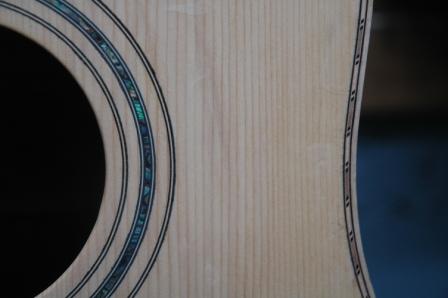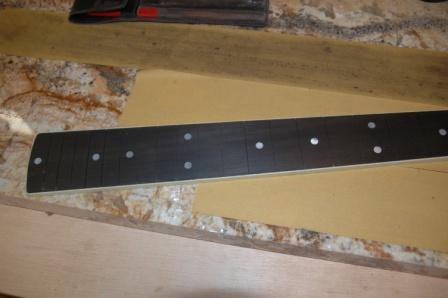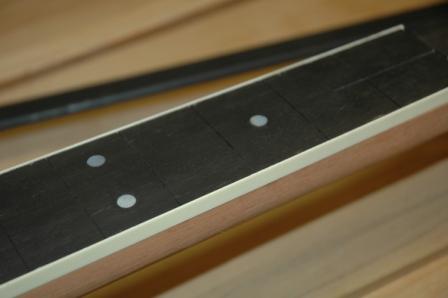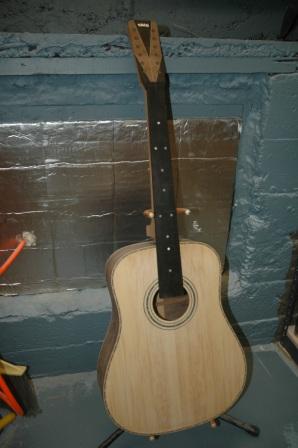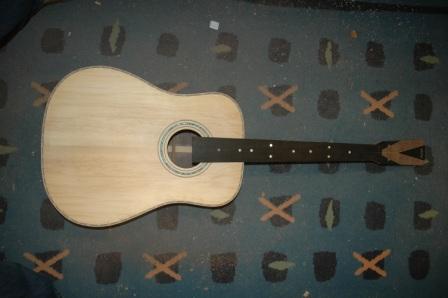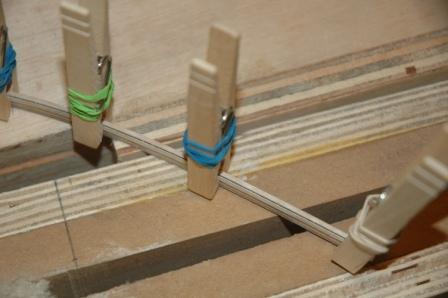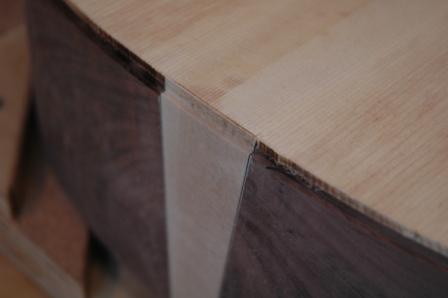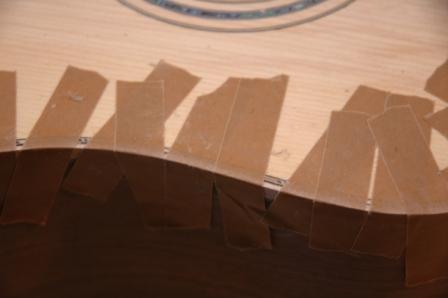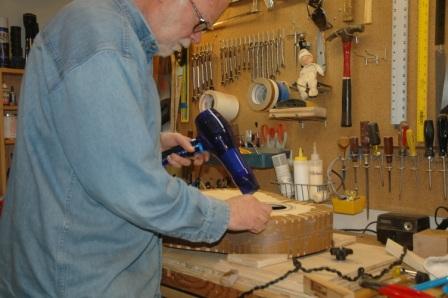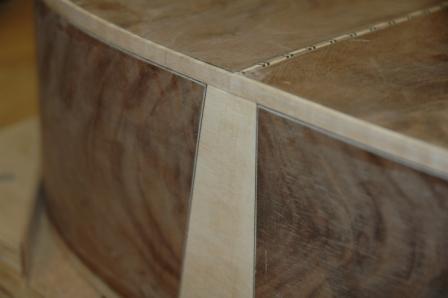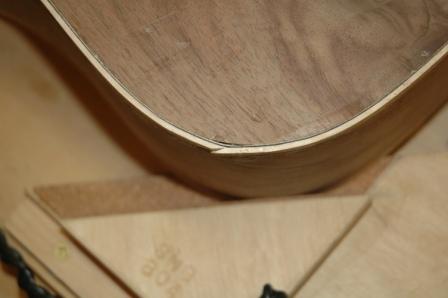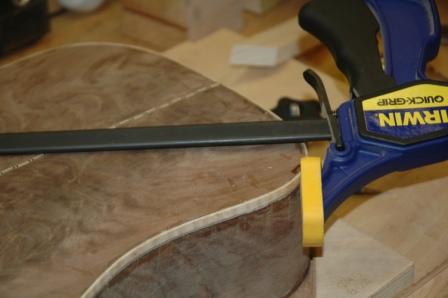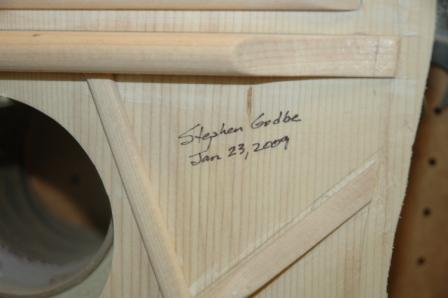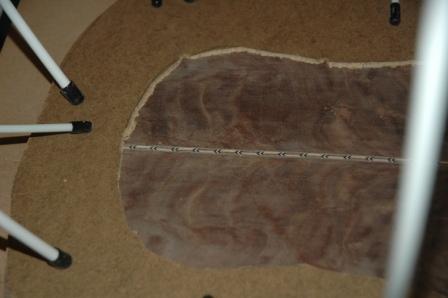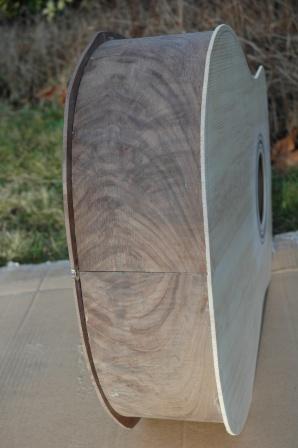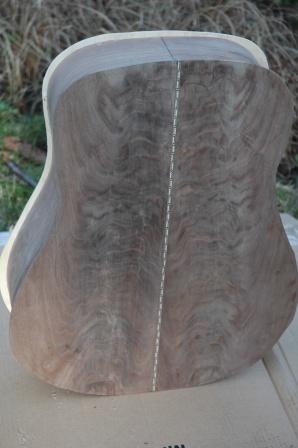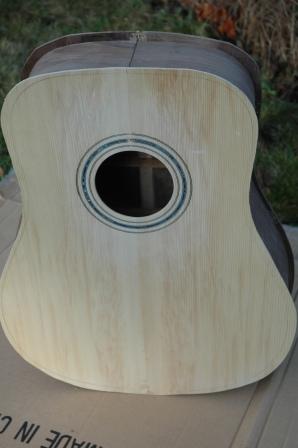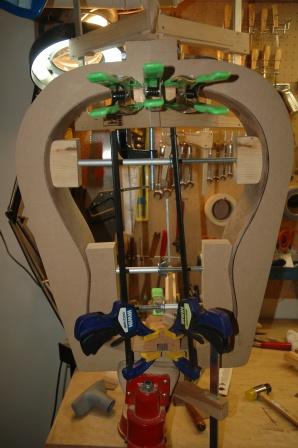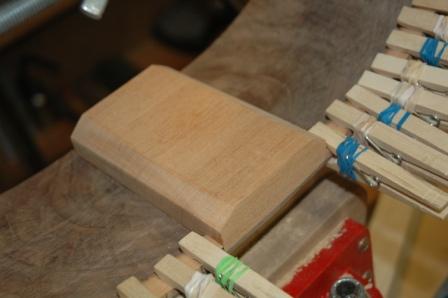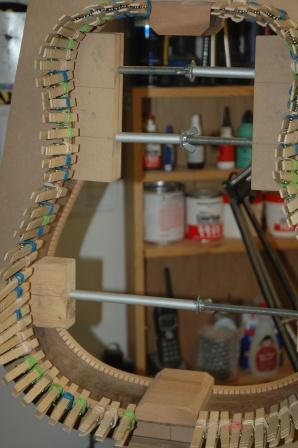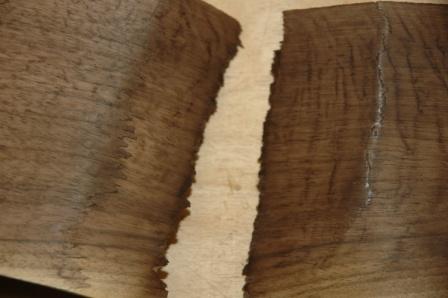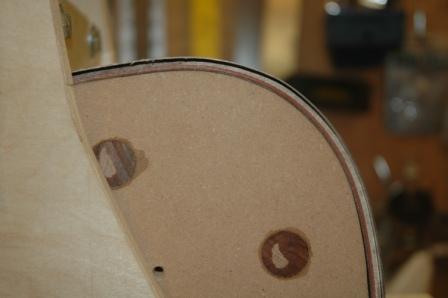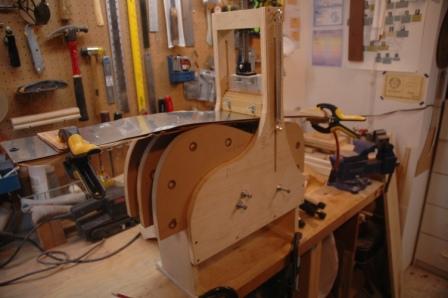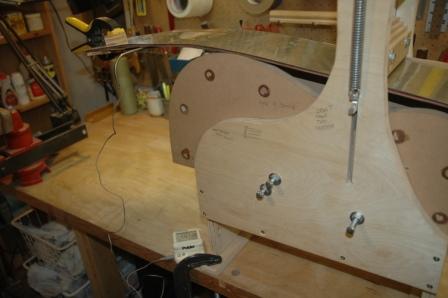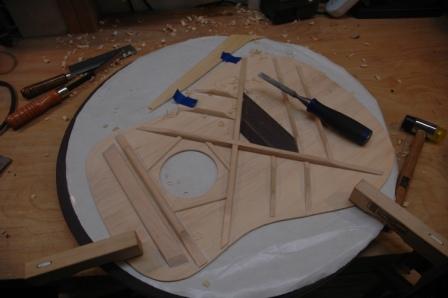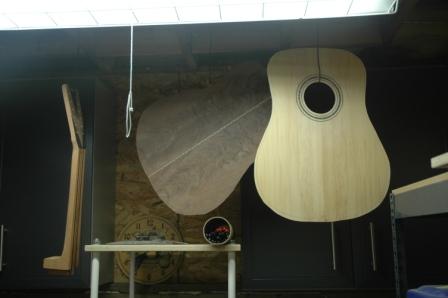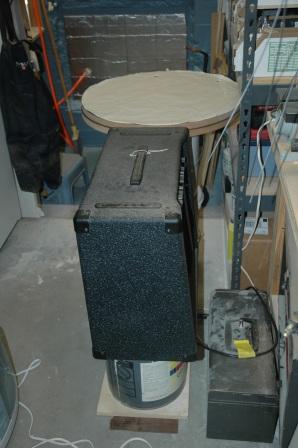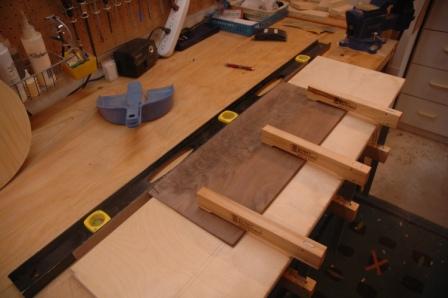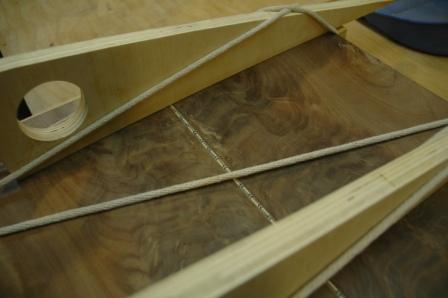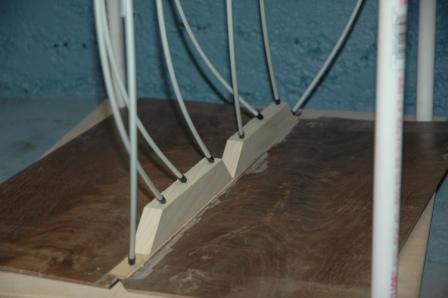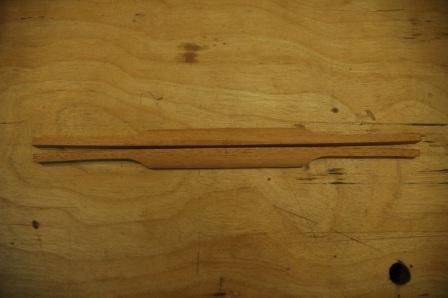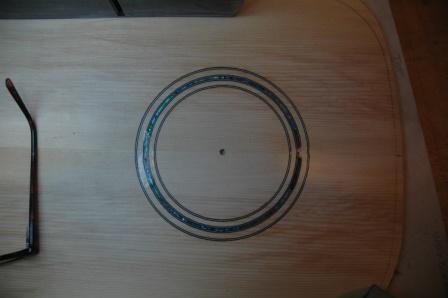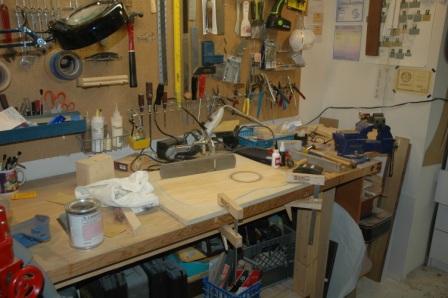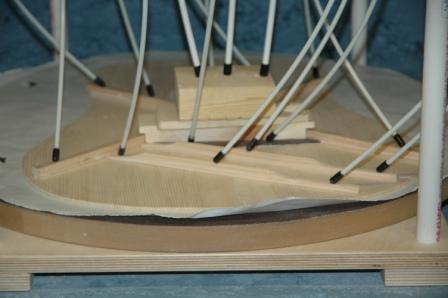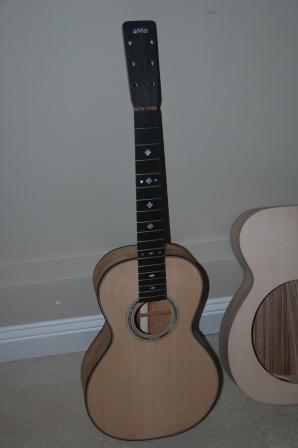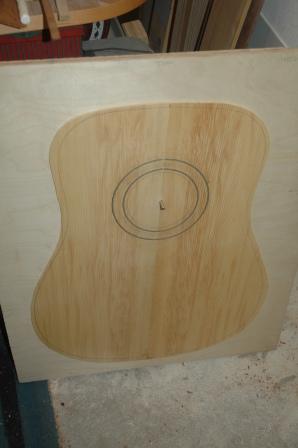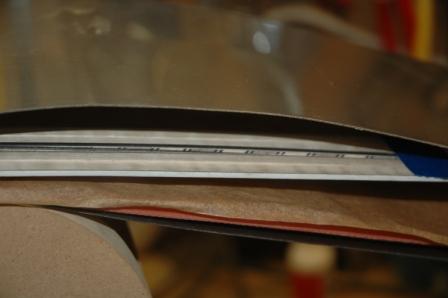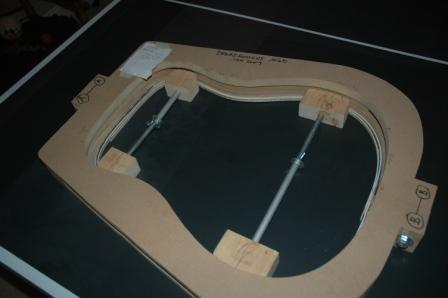January 21, 2009
Yesterday, the replacement walnut sides arrived. As you may recall if you are a regular follower of this blog, I purchased a bench top planer to use to bring down the thickness of the sides to at least 3mm. The planer worked very well on spruce, but when I planed down the walnut sides I met with disasterous results. The planer would have worked well on the walnut, even though it is a harder wood than spruce, had the side grain been consistent and in one direction. The planer is a rotating drum of blades that cuts into the approaching wood in the opposite direction of the wood moving through the planer. If the wood grain that meets the planed surface skews away from the entering planer blade, no problem. If the grain points toward the planing drum, the blades will grab the grain (instead of shaving it) and pop off or break through the wood plate.
Here’s and example of a wood plate with grain all going in the same direction as seen from the side:
/ / / / / / / / / / / / / / / / / / / / / / / / / / / / / /
If the wood is fed into the planer as shown, it will grab the top of the grain and pop off pieces. If this piece were turned upside down or fed from the left, the grain as it meets the top of the wood would be leaning away from the cutting blades, and you get a nice smooth cut.
The problem with the walnut is that the pieces all have shifting grain direction, making the planer option disasterous down around a 3mm thickness. Here’s what the walnut looks like, viewing from the side:
/ / / / / / / / / / / / / / | | | | | | | | \ \ \ \ \ \ \ \ \ \ \ \ \
As I mentioned, it works just fine down to about 3 or 3.25 mm. After that, the above piece fed into the planer will get from the front through the middle then pop off the rest of the board on the left when it hits the first strong forward directional grain.
The replacement pieces seemed to have enough similar directional grain, so I hit the old planer again, feeding both pieces in, one after the other, and only taking off around .25mm at a time. The results were excellent! Except when I went from 3.25 mm to 3 mm. I whacked off a piece from the leading edge. I had just previously measured the 3.25 mm, examined the wood carefully, and smiled, said, “one more time”. Crap.
The whacked off piece left just enough side remaining to qualify as a side. I put it in the bender, cranked up the heat, and turned a nice piece of walnut into charcoal. Two critical mistakes in the course of 1/2 hour.
Mistake recap:
1. Using a planer to thickness figured hardwood.
2. Trying to bend 3.25mm thick wood (which is highly figured)
3. Placing the heating blanket on TOP of the wood and turning it up to 11.
Now I am in serious shit. I have two unmatched but good pieces of figured walnut, one from each batch which are close enough in color and figure to be entirely appropriate for the guitar sides. One is 3.25mm thick, the other, 4.15mm thick (both too thick to bend). I will NOT put either of these pieces in the planer again. I need to get them down to about 2.5mm and bend them properly with the heating blanket UNDER the wood, and the temp level to 5, instead of 11. I have enough experience to (hopefully) execute the next bends properly IF I can get the plates thicknessed down to 2.5mm.
I can hand sand them, orbital sand them, or belt sand them. I could buy a $700 drum sander, or I could get O.B.Williams to thickness sand them for me, for around $75. I could (and did) call LMI and order a pair of walnut sides as emergency replacements in case my next steps fail as well.
So, I continue to learn a lot about my decision processing when I encounter problems such as these. There’s my initial gut reaction which usually results in me trying to buy my way out of the problem with extra tools, supplies, or services. When I can resist the initial gut reaction, I spend a lot of time thinking through all the possible next steps. I got through my gut reaction around 10am today, and other than inquiring with LMI about walnut side availability, I did NOT buy any solutions (especially the $700 drum sander solution). So here’s what I’ll do tonight, and I will aspire to being successful, and will not curse if not successful, knowing I have a backup plan with LMI.
1. Commit to thickness sanding the remaining good sides using my hand held belt sander. No matter how long it takes, I will work those puppies until they are no thicker than 2.5mm.
2. Properly build the bender sandwich which keeps the tomato (silicone heating blanket) UNDER the wood. From the bender mold out, the order will be: stainless steel sheet, tomato, parchment, walnut, parchment, stainless steel sheet. (I even drew a diagram on the side of my bender so I would remember, along with the caption: “don’t cook the outside”.) . Do NOT spritz the wood. Subsequent reading suggested it was a no-no with figured wood.
3. Don’t turn the heat dial above MED. Don’t cook for more than 15 minutes.
4. Draw the spring blocks slowly but don’t hover over any one spot.
If I fail, I will scream, and I will probably have bad dreams again tonight as I did last night. Last night all my family, all my friends were disappointed in me and my mechanical ineptitude (in my dream).
